Local News
Premier Wab Kinew wows an audience of seniors at the Gwen Secter Centre
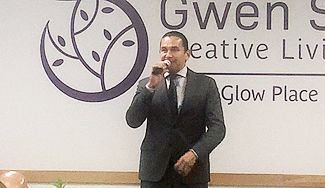
By BERNIE BELLAN (Sept. 11, 2025) There was a mood of heightened expectancy the afternoon of Wednesday, September 10, at the Gwen Secter Centre. The premier of Manitoba, Wab Kinew, was scheduled to arrive at approximately 1:30 pm to speak to a large audience of over 60 seniors (including this writer).
(Seniors are able to come to the Gwen Secter Centre every Wednesday for a delicious lunch, followed either by entertainment or a speaker.)
But Premier Kinew had been scheduled to come to the Gwen Secter Centre a couple of months prior to this particular day – but was forced to cancel due to something unexpected that had come up in his busy schedule, as things are wont to do when you’re the premier.
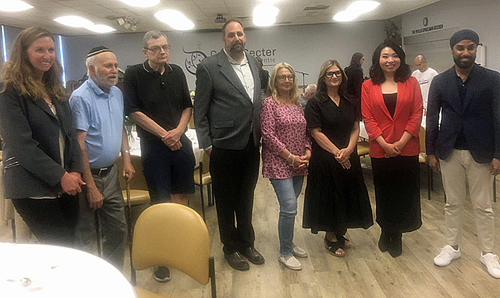
This time though, three other NDP MLAs arrived prior to the premier and – because none of them looked like a senior – although I didn’t have a clue who any of them were, I assumed that they weren’t there simply for no reason at all, so I asked one of them, who happened to be a nice, young woman: “Is the premier going to show or is he going to bail again?”
I don’t think she particularly liked the tone of my question (Obviously she didn’t know who I was either, otherwise she wouldn’t have been surprised at my cheekiness), but she responded quite warmly, reassuring me that he was on his way. She also asked me what I was doing there – because I was standing outside the auditorium when everyone else was seated by that point, so I said: “Hey, I’m a senior – so I’m entitled to be here, but I’m also a very annoying reporter – and I’m here to cover this.”
But where was the security detail that one would normally expect to see in advance of a VIP as important as the premier? I wondered.
It turns out there was one lonely security guy – in a suit, but not wearing an earpiece. (I asked him if he was security because he was dressed too nicely for the Gwen Secter Centre – and he wasn’t talking with anyone.) He admitted that he was security, but when I said that I thought there would be more like him considering it was the premier of Manitoba who was coming, he answered that they consider the kind of audience that will be at an event when planning security for the premier – and no one thought that audience that day was going to be overly dangerous. Also, the premier was scheduled to arrive after everyone in the audience had had lunch; he was wise not to arrive before lunch because seniors, especially Jewish seniors, generally don’t care who it is they’re going to hear from – all they want to know is whether the food is going to be served on time!
As it was, Premier Kinew was only a few minutes late and, after mingling with the Gwen Secter staff for a few minutes, made his way directly to the microphone situated at one end of the auditorium. There was no grand entrance accompanied by a phalanx of minders – only the premier, who had a big smile on his face as he navigated the tables of seniors. (Clearly he hadn’t been advised that every Jewish event starts late and that no one as important as a premier simply walks in unaccompanied by a large retinue of self-important toadies.)
Dan Saidman, who is program coordinator at Gwen Secter, introduced the premier with a few brief remarks. Thereupon Premier Kinew stood in front of the auditorium and, being a polished speaker whom we’ve all learned is totally comfortable in front of a mic, spent about 20 minutes talking about what his government has done.
There wasn’t much that anyone who follows Manitoba politics wouldn’t have heard before, but unlike so many other politicians, the premier seemed to be totally at ease and engaged as he spoke.
Now, ordinarily one might have thought that, after all, it was the premier of Manitoba, so how much time would he have had to spend at the Gwen Secter Centre in the midst of a weekday afternoon?
But, I was pleasantly surprised to hear the premier, following his remarks, say: “I’m willing to take any questions if anyone has them.” Okay, I thought, a few minutes maybe, but I was amazed to watch the premier of Manitoba listen to question after question, and answer them all thoughtfully – for over 45 minutes.
The questions covered quite a wide range of issues. Two questioners asked about the security situation at the Health Sciences Centre and one of those questioners struck a particular chord when he began his question by saying that he has two daughters who work as nurses at HSC – and they’re frightened to walk to their cars at night when they leave.
I had thought before I even rode my bike to Gwen Secter Centre (which I like to do because I’m a thrill seeker and riding a bike in Winnipeg is nothing if not thrillingly dangerous) that, if I had the opportunity to ask the premier a question, I was going to ask him about renewable energy.
So, when Dan Saidman handed me the mic, I did ask him a question along those lines, but I began by saying to the premier that the impact he made upon the Jewish community in October 2023 – and this was shortly after the NDP had won the election, when he spoke at the massive rally that was held at the Asper Campus, and touched anyone who was there by the support he showed for the Jewish community and how heartfelt he was, was very much appreciated.
But, I went on to say, we all know that the health file is an almost impossible challenge, that crime is another almost impossible challenge – so is homelessness but, for gosh sakes, he’s an NDP premier and the government seems to have given up on renewable energy as a goal.
The premier responded that, in fact, the government is engaged in quite a massive build-out of wind power which ultimately, will end up adding 600 megawatts to Manitoba’s total energy supply – amounting to “ten percent” of Manitoba’s total energy capacity when all is said and done.
He went on to describe in some detail three different projects, each of which will add approximately 200 megawatts to our energy capacity.
I admit I was quite surprised to hear the premier’s answer because there have been so many letters to the editor and opinion columns in the Winnipeg Free Press decrying Manitoba’s almost total reliance on hydro power, also the construction of a new natural gas energy plant. I’m not expert enough to know whether Premier Kinew’s answer was based on real, hard commitments or not, but he seemed to be thoroughly acquainted with the details of the plan to add a massive amount of wind power to the infrastructure we already have. When all three components of the wind power plan are implemented, Premier Kinew said, it will quadruple the amount of wind power we presently have in Manitoba.
As he stood there, fielding question after question, listening patiently and always answering thoughtfully, even though it’s not the first time I’ve been in an audience when Wab Kinew has spoken, I thought to myself: He genuinely likes people. I’ve met a lot of politicians in my day, but the only other politician who I also thought honestly seemed to enjoy meeting people was Justin Trudeau, but that was before he became prime minister. I remember Justin Trudeau attending Shalom Square in 2015, accompanied by Jim Carr, and watching him climb over chairs in the Rady JCC gym to shake hands with people, to get hugged by oodles of women, all the time with a big smile on his face.
Of course, as Charles Adler once remarked on his radio show, “Once you can fake sincerity, the rest is easy,” so who’s to know what people like Wab Kinew and Justin Trudeau really would be thinking when they were working an audience?.
But, when he finished answering all the questions that anyone had, Dan Saidman asked the premier one more: “Who were the people whom he admired most in life?”
Kinew’s answer was: “His mother and his father.” He told a particularly poignant story about his father, who had been a chief during his lifetime. When his father lay dying in a hospital, Wab said he would go visit him every day. He hadn’t been all that close to his father until that time, he said, but after spending those final days with his father, he realized that not only was his father his father, he was his “best friend.”
And, following that final remark, the premier of the province said that he was going to stick around and chat with anyone who wanted to talk to him – which he proceeded to do for another half hour.
As Gerry Posner might say: “What a mensch!”
Local News
Canadian produced kosher wine now available in Winnipeg
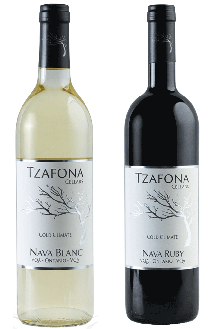
By BERNIE BELLAN With the imposition last February of a ban on the sale of American liquor in Manitoba, the only type of kosher wines that were available here were from Israel, specifically wines produced by the Galil winery.
Since the latter part of September, however, kosher wines produced by a Canadian winery are now available in Manitoba liquor marts, also the Kenaston Wine Market.
The wines – a red and a white, are produced by a winery known as Tzafona Cellars – located in the Niagara region of Ontario.
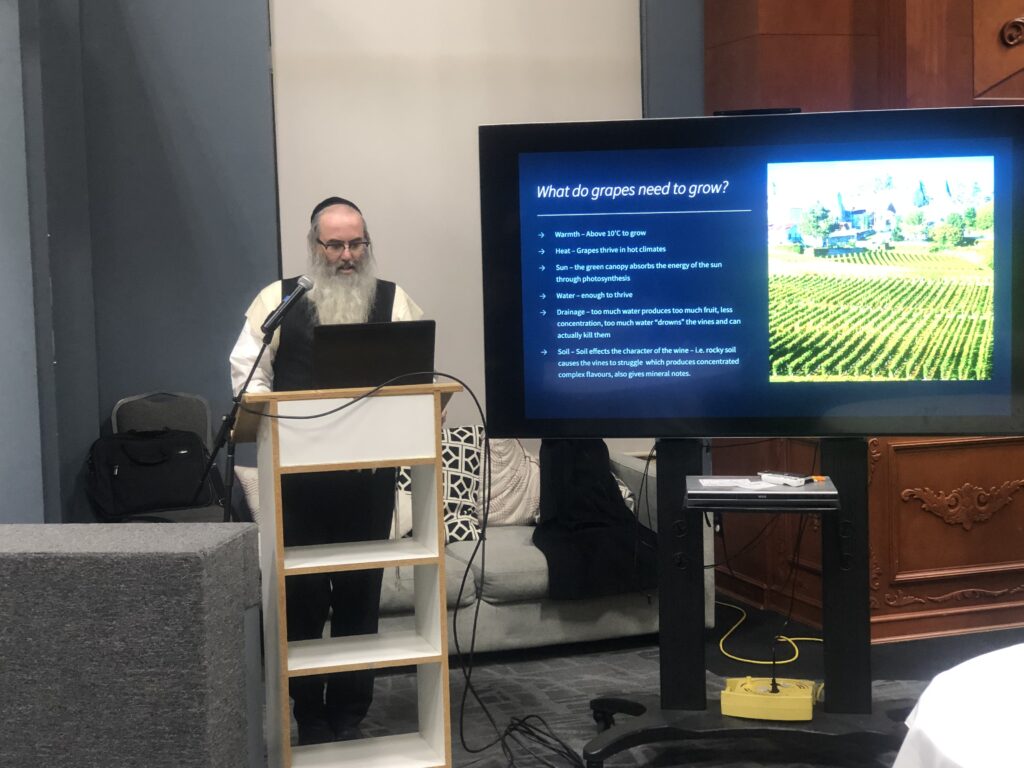
On Tuesday, December 2, Rabbi Avraham Gislason, who is a a rabbi in Thornhill, as well as a Tzafona Cellars winemaker, spoke to a large crowd at the Jewish Learning Centre, where he not only explained how kosher wine differs from non-kosher wine, he brought along bottles of five different wines produced by Tzafona Cellars for members of the audience to taste.
So – what makes a wine kosher? you might ask. According to the internet, “A wine is kosher if it is made according to Jewish dietary laws… with strict supervision and handling by Sabbath-observant Jews from the crushing of the grapes to the bottling of the finished product. The winemaking process must use only kosher-certified ingredients, such as yeast and fining agents, and rabbinically-approved equipment.
Rabbi Gislason himself started Tzafona Cellars in 2014. According to the Tzafona website, Rabbi Gislason saw that the “soil, air, and microclimate of the Niagara Peninsula all come together to create an up-and-coming world class wine region, yielding a unique experience that cannot be recreated anywhere else in the world.”
While he appreciated the quality of the wines being produced in the Niagara region, there was one problem: None of the wines were kosher.
According to the Tzafona website, “Starting with the 2014 vintage, Tzafona began to produce kosher wines using the same techniques and high-quality grapes used in producing other premium non-kosher wines. Since then, Tzafona has continued to produce a variety of different wines, namely Cabernet Sauvignon, Riesling, and Chardonnay. We have produced award-winning Icewines in the Vidal, Riesling, and Gewurtzraminer varietals. Tzafona is the only kosher Icewine producer in North America. Their Cabernet Franc Icewine won a Gold Medal at the All Canadian Wine Championships in 2025.
In 2016 we began to produce a line of refreshing semi-sweet wines under our brand “Nava Blanc” and “Nava Ruby.” (It is the Nava Blanc and Nava Ruby wines that are now available in Manitoba). Both of these wines are Tzafona’s bestsellers here in Canada and the USA.
The process of getting Tzafona wines approved in Manitoba was set in motion by Winnipeg marketing specialist Marsha Friedman, who for many years has worked as a marketing consultant and sales agent for businesses looking to offer premium kosher foods to their customers.
Her business, Excellence & Kosher, focuses on identifying unmet needs in the market. “I see a need and I try to fill it,” Marsha says.
“We also ensure that the most needed Kosher food products for the stores that carry Kosher are available, including Canadian Kosher wine,” she adds.
Marsha explains that she approached Tzafona—the only truly Canadian kosher wine company—some time ago with the idea of opening the Manitoba market for them and introducing their wines to local consumers.
Afterward, she contacted tManitoba Liquor and Lotteries (MBLL), which agreed to begin carrying two Tzafona wines: Nava Ruby (Red) and Nava Blanc (White).
Since that initial success in making Tzafona wines available for purchase in Manitoba, Marsha says that she and her daughter Shira have been making similar progress in Alberta and hope to expand into the British Columbia market as well.
For more information about Tzafona Wines, including the addresses of stores in Winnipeg and throughout Manitoba that carry their products, please visit the MBLL Liquor Marts website:
https://www.liquormarts.ca/liquormarts
Go to “Find a Product” and type “Tzafona.” Both wines will appear. Select the wine you’re interested in, then click “Store Inventory.” A list of all MBLL Liquor Marts that carry that product will be displayed.
Marsha adds that “We are hoping to have more listings of Tzafona wines available for Pesach this year, and we will be presenting them to MBLL for their approval.
“L’Chaim!”
Local News
Thanks to a Grant from the Asper Foundation the Gwen Secter Centre will Soon Begin Offering Free Kosher Shabbat Meals to Jewish Seniors
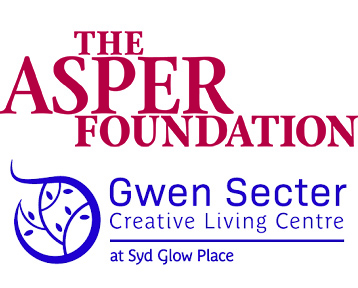
By BERNIE BELLAN In these increasingly difficult times – when so many families are finding it difficult to make ends meet, one group in society in particular is being hard hit by escalating food prices: seniors.
As food prices continue to rise, many seniors are struggling to afford many food items that they had always enjoyed previously. And, when it comes to Jewish seniors who might want to continue to remain kosher, the struggle is even more difficult – as the price of kosher meat and chicken has gone up even faster than the price of nonkosher meat and chicken.
Now, in an attempt to provide a modicum of comfort to some of those Jewish seniors, the Gwen Secter Centre, with support from the Asper Foundation, is about to begin providing kosher Shabbat meals for up to 50 Jewish seniors on a weekly basis.
Here is how Becky Chisick, executive director of the Gwen Secter Centre, describes what is going to be called the “Mitzvah Meal Program” will work: “We will be launching a new food security program supported by The Asper Foundation. Food security is a going concern is our community, especially with seniors living on a fixed income. The Mitzvah Meal program will ensure no one in the Jewish community is unable to celebrate Shabbat and other important Jewish holidays throughout the year. This program will transform the lives of so many seniors.
“Gwen Secter Creative Living Centre will be working closely with Jewish Child and Family Services to identify those who qualify for the program. There are many seniors that are not able to access Kosher Meals on Wheels (which is already a subsidized program thanks to the Jewish Federation), due to financial restrictions. The Mitzvah Meal Program, Supported by The Asper Foundation, has different criteria than the Kosher Meals on Wheels program.
“During the pandemic, we quickly realized how many seniors were not able to celebrate Shabbat due to lack of resources and finances. The Mitzvah Meal program will provide up to 50 individual low-income seniors with a healthy and fresh Shabbat (meat) meal, including chicken soup, challah bun, full entree of chicken, starch and vegetables, and dessert. In addition, they will receive special holiday foods and tools, so everyone is able to celebrate Shabbat and other Jewish holidays. For example: latkes and sufganiyot for Chanukkah, hamantaschen for Purim, etc. Those that are able to light candles at their residence will also get Shabbat and Chanukkah candles.”
Becky added, however, that “We still require close to $10,000 to ensure we can accommodate the max for a year and I plan to apply to The Jewish Foundation for the support.”
We contacted Anita Wortzman, president of the Asper Foundation, to ask her how the Asper Foundation became involved in this program. Anita responded: “The Asper Foundation is thrilled to support Gwen Secter Creative Living Centre and their new Mitzvah Meal Program. We believe that seniors in our community should be treated with the dignity, comfort and connection that Shabbat and the Jewish holidays bring. The long-term work of Gwen Secter Living Centre in delivering kosher meals on wheels, makes this a wonderful extension of that service to the Jewish community.”
As to how recipients of the “Mitzvah Meals” are chosen, we received this response from Alexis Wenzowski, Chief Operating Officer of JCFS: “Our priority will be ensuring that low-income seniors, those experiencing social isolation, and those facing mobility or transportation challenges are referred into the Gwen Secter program in a timely and effective manner.
“We have shared information about the Gwen Secter Food Security for Seniors Program across our Mental Health and Addictions, Settlement and Integration, and Older Adult Services teams. These program areas collectively serve some of the most marginalized and isolated seniors in our community, many of whom face complex barriers to accessing nutritious kosher food. We foresee there to be many referrals from these JCFS (programs into the Gwen Secter initiative. We are grateful and excited there will now be a formalized cooked meal Shabbat program for food insecure seniors.”
Alexis added this note about the number of individuals within our Jewish community who seek assistance from JCFS as a result of financial pressures: “JCFS is keenly aware that financial stressors and the cost-of-living crisis is impacting everyone. Food insecurity continues to be a significant and growing concern across our community, as it is in all communities. In the past year alone, our Asper Empowerment Program supported 179 unique households, with 7,542 kg of food security supports. An additional 122 households received employment and financial supports — including interest-free loans, grants, gift cards, and budgeting guidance — underscoring the breadth of need we are seeing. People are struggling.”
As noted, however, while Becky Chisick stated that the Asper Foundation funding will help to get the program going, the Jewish Foundation is being approached to provide additional funding in order to guarantee that the program can continue for at least one year. In the meantime though, if you would be interested in making a donation to help fund the program, Becky encourages you to make your contribution to the Gwen Secter Centre, stipulating that you want the money to go to the Mitzvah Meal Program.
One more note: While there are already some volunteer drivers in place once the program begins, more are still needed. To volunteer as a driver, contact Vanessa Ordiz at the Gwen Secter Centre: vanessa@gwensecter.com or phone 204-339-1701. Volunteers will be provided quarterly tax receipts for their service.
At the same time, by volunteering as a driver, it will allow for meaningful connections between clients and volunteers. For many clients this may be the only person they connect with that day.
Local News
Community leader Sheldon Zamick role model of perseverance despite life’s vicissitudes
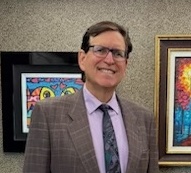
By MYRON LOVE For Sheldon Zamick, life is a marathon, not a sprint – and there is always more to learn. In a life marked by struggles, he has overcome adversity and written a story of success both in business and community leadership.
Over the years, he has given of his time and experience to a great variety of charitable organization – including the Jewish Federation, the CJA, the JNF, Canadian Associates of Ben-Gurion University of the Negev, the Canadian Magen David Adom, the Shaarey Zedek Synagogue (he is currently the Board’s finance chair), the Canadian Museum for Human Rights, Mount Carmel Clinic, the Variety Club, Muscular Dystrophy, Habitat for Humanity, Siloam Mission, and the Canadian Institute for the Blind. The most recent charitable organization that has benefited from his leadership has been the Lake Winnipeg Research Consortium.
He took on his most recent challenge as executive director of the Lake Winnipeg Research Consortium last year after stepping away from a 40-year career in real estate sales. “This is a really big responsibility,” he says of taking the helm of the LWRC.
As noted on the LWRC webpage, the organization was founded in 1998 “to facilitate scientific research on Lake Winnipeg following evidence of water quality deterioration related to the 1997 Red River ‘Flood of the Century’. The LWRC was incorporated in Manitoba in 2001 and received charitable status in 2008”.
“Our organization does vital research in regard to Lake Winnipeg,” Zamick points out. “Our 328-ton, 110-foot-long ship, the MV Namao – which celebrated its 50th birthday this past August (during which over 1200 supporters toured the boat) in Gimli – is out regularly in the spring, summer and fall on Lake Winnipeg taking water samples. We provide the research platform for scientists to conduct research with regard to climate change and the state of the lake and fish population. We offer science education year round, group tours and summer camp programs for kids.”
He adds that the consortium works closely with many stakeholders, including the Universities of Manitoba and Winnipeg, and receives funding from the Winnipeg Foundation, the Canada Water Agency, Manitoba Hydro, the Manitoba Government, the City of Winnipeg, the town of Gimli, other municipalities and many individual donors.
“It has been great getting the opportunity to meet with various government officials, research partners and donors,” he says.
Sheldon Zamick is a role model demonstrating that an individual growing up in humble surroundings and having to deal with adverse circumstances can succeed in life. He recalls how he had to go to work early in life – at the age of 12 – to help support his family. “We moved around a lot when I was growing up in the North End because my parents could never afford to buy their own home,” he recounts. “That is what drew me to a career in real estate.”
His first job, he says, was peeling potatoes in the basement at Kelekis (a long gone North End Winnipeg restaurant which those of us of a certain age still fondly remember). “I had to learn at an early age to be self-sufficient,” he notes.
In his university days, he worked part time as a corrrections officer – taking as many shifts he could get – at the Winnipeg Remand Centre.
He also demonstrated his leadership capacity at an early age. At 17, he served as president of the USY chapter at the former Rosh Pina Synagogue (even though his parents couldn’t afford to be members of the shul).
After graduating from the University of Manitoba with degrees in Economics and Psychology, he founded TV Facts Magazine, a free weekly TV and shopping guide which some readers may remember. “TV Facts was part of an international chain of publications,” he recounts. “I had to travel to New York to learn how to run a magazine. At our peak, we were putting out 50,000 copies a week – which were available in over 500 locations.”
It was in 1985 that Zamick pursued his interest in becoming a realtor – a profession in which he excelled. Over 40 years as a realtor, he received numerous sales awards, also recognition for his leadership role in his profession and his numerous contributions to the wider community. In the former field, he served for five years as a member of the Winnipeg Real Estate Board, including a term as treasurer and chairing the Government Relations committee.
In 2013-14, he was elected as a director of the 120,000-member Canadian Real Estate Association.
Zamick was recruited into volunteering in the Jewish community, he notes, in the mid-1980s by Laurie Goldberg and the late Larry Rosenberg, who were co-chairs of the Federation’s Young Adult Division. Sheldon subsequently served as co-chair –with Sid Halpern – of the 1987-88 Combined Jewish Appeal’s New Gifts Division.
“We were responsible for contacting members of the community who hadn’t given for a long time,” he explains. “We were really successful in persuading many of them to contribute to the campaign and (by extension) the community.”
That year, he and current outgoing Federation president Paula Parks were nominated to receive our community’s Young Leadership award. Zamick was presented with the Harry Silverberg Young Leader of Distinction Award by Nora Kaufman, the late Harry Silverberg’s daughter.
He later served as the CJA’s campaign director from 1989 to 1992. “During the 1989-90 campaign – that included Operation Exodus (aimed to help Jews leave the dying Soviet Union) – we raised an extra $2 million- bringing in a total of $6-million that year.”
In 1992, Zamick was afflicted with a condition that might have derailed a lesser individual. He was diagnosed with Retinitis Pigmentosa, a condition that left him legally blind. The ever resilient Zamick however took the diagnosis in stride. In 2022, he told an online publication called “Slideshare” that, after the diagnosis, he chose to be thankful for what he had rather than focus on what he had lost.
He added that while legally blind, he still has some sight in certain lighting. “It is a unique way to live,” he told Slideshare, “but you have to adapt to it and I haven’t let it stop me.”
He has been helped immensely by his longtime, supportive wife, Florence.
Typically, following his diagnosis, he threw himself into volunteering with the Canadian National Institute of the Blind. He served on the board of the CNIB for 16 years and was a leader in raising the funds one year – when the CNIB was facing government cutbacks.
Zamick is planning to retire from his current position at the end of this month. He says that he and Florence are looking forward to spending more time with family and friends, travelling –a pasttime they both enjoy, and getting together with their children – Natalie in Toronto and Steven and his wife Ally, along with granddaughters Isabella and Mikayla in Montreal.
He is however, still open to new possibilities. “You never know who might call next,” he observes.


